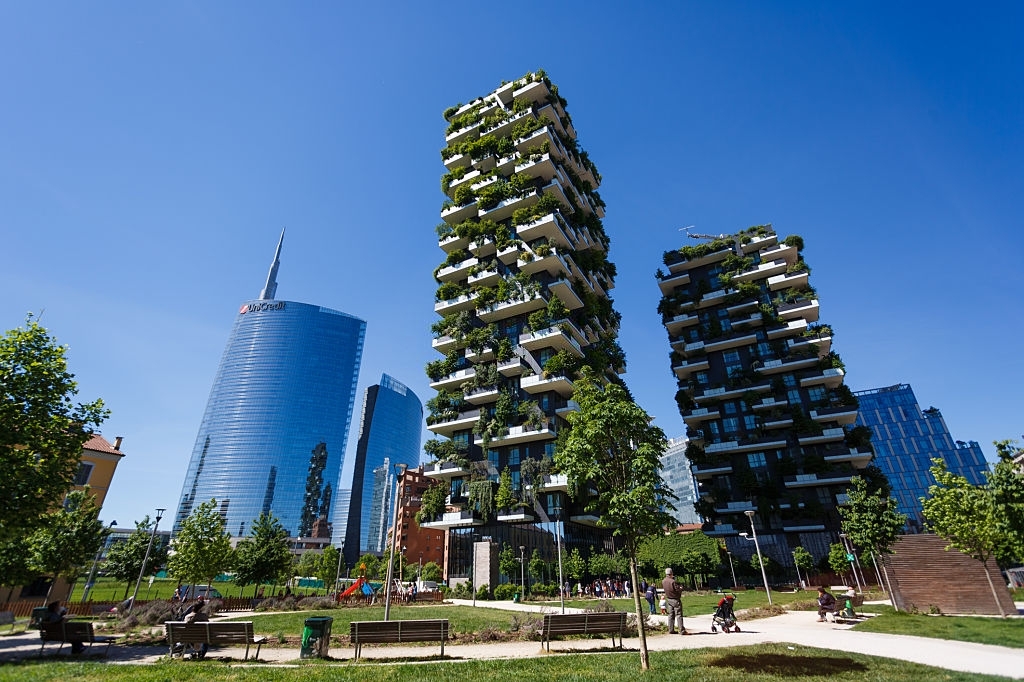I write about Milan as one of the many people who have moved to this city for work reasons in the past years.
Living and working in a city other than one's own, as a commuting emigrant, makes us see everything with special eyes. Although the comparison between the city of origin (in my case Rome) and that of adoption for work (Milan) is natural.
I started by trying to grasp whats new about Milan's and stimuli in terms of differences, but this was only the beginning.
One of the first things I had noticed was the scarce presence of trees and parks, replaced by some gaunt little gardens and rare flower beds.
Milan in the 2000s captured you for its commercial activities, its gleaming shop windows, the concentration of luxury and some certain myths.
The fashion district, Corso Como, the Navigli, the Duomo, La Scala, the headquarters of large national and international companies, all this was the founding myth of the dynamic Italian city par excellence.
I remember with tenderness that in the path between my home and my office there was a mysterious space that stood out in the middle of the concrete of the buildings and the gray of the offices: the Bosco di Gioia.
A fragment of greenery in the central station area with more than 200 different species of trees: a lush oasis, fenced and inaccessible since 2001. A striking contradiction with the surroundings.
I learned that it was what remained of the historic Fumagalli nursery, expropriated to build the new Palazzo Lombardia, even if in the intentions of the owner (Giuditta Sommaruga) the wood had been left to the Milanese citizens to enjoy some green.
But one day in 2006, the wood was brutally cleared to make way for the business centre, which would have completely transformed that part of the city in a few years.
The new headquarters of the Lombardy region, piazza Gae Aulenti, the surrounding skyscrapers, the connection between the old Isola district (streets and squares with a Parisian flavour in Milan) and the area of Corso Como and Corso Garibaldi were under construction.
New fountains, squares with commercial area and a huge pedestrian area.
Over the years of construction sites, I often wondered if there would be a green space for citizens to compensate for the tons of steel and glass that were poured into the area.
[caption id="attachment_121386" align="center-block" width="1024"] Several years later, the two innovative skyscrapers of the Bosco Verticale (designed by architect Stefano Boeri and awarded as the most beautiful and innovative skyscrapers in the world in 2014) and the most recent library of trees, performed the miracle.[/caption]
Several years later, the two innovative skyscrapers of the Bosco Verticale (designed by architect Stefano Boeri and awarded as the most beautiful and innovative skyscrapers in the world in 2014) and the most recent library of trees, performed the miracle.[/caption]
Both as landscape and for use by all Milanese.
The old concept of urban park has been replaced by a green landscape consisting of the two skyscrapers of the vertical forest, with the dozens of perfectly cultivated green species that capture the gaze of all and are the source of thousands of photographic shots.
Instead the actual park, the library of trees, is a huge space full of greenery, especially low plants, bushes, lavenders, rosemary, which enrich the various activities with their presence (children's games, sports, commercial activities, cultural centres, railway station) connecting the various areas and making a simple walk a very rewarding experience.
The gaze sweeps in all directions and allows you to embrace the quintessential activities of a city through 360 degrees: work, leisure, play, shopping, relaxation.
There are even deckchairs with umbrellas, in this strange 2020.
Finally, after 15 years, the transformation is almost complete and this part of the city has become beautiful, fun and easy to use.
It is always full of people and life, it has gone from being a “no-place” of Marc Augè to becoming a pulsating and integrated centre in the life of the new Milan with its new skyline.
Since 2015, the year of the Expo, Milan seems not to have stopped its metamorphosis and is heading towards the next goal: the 2026 Winter Olympics.
Every time I have returned to Milan for the past 5 years, the face of the city always seemed different to me.
A building site was added, a new building, new signs, new urban furniture ... today it seems to me that the spirit of the old forest of Gioia, destined symbolically but without luck to the green city, has acted like a genie of the Milanese lamp, and that dream has come true.
The urban modernisation is finally fully available to everyone and I like to think that the idea of Giuditta Sommaruga inspired this work and stays nearby ...
Today Milan is a city that I like and to where I always return.







Follow us